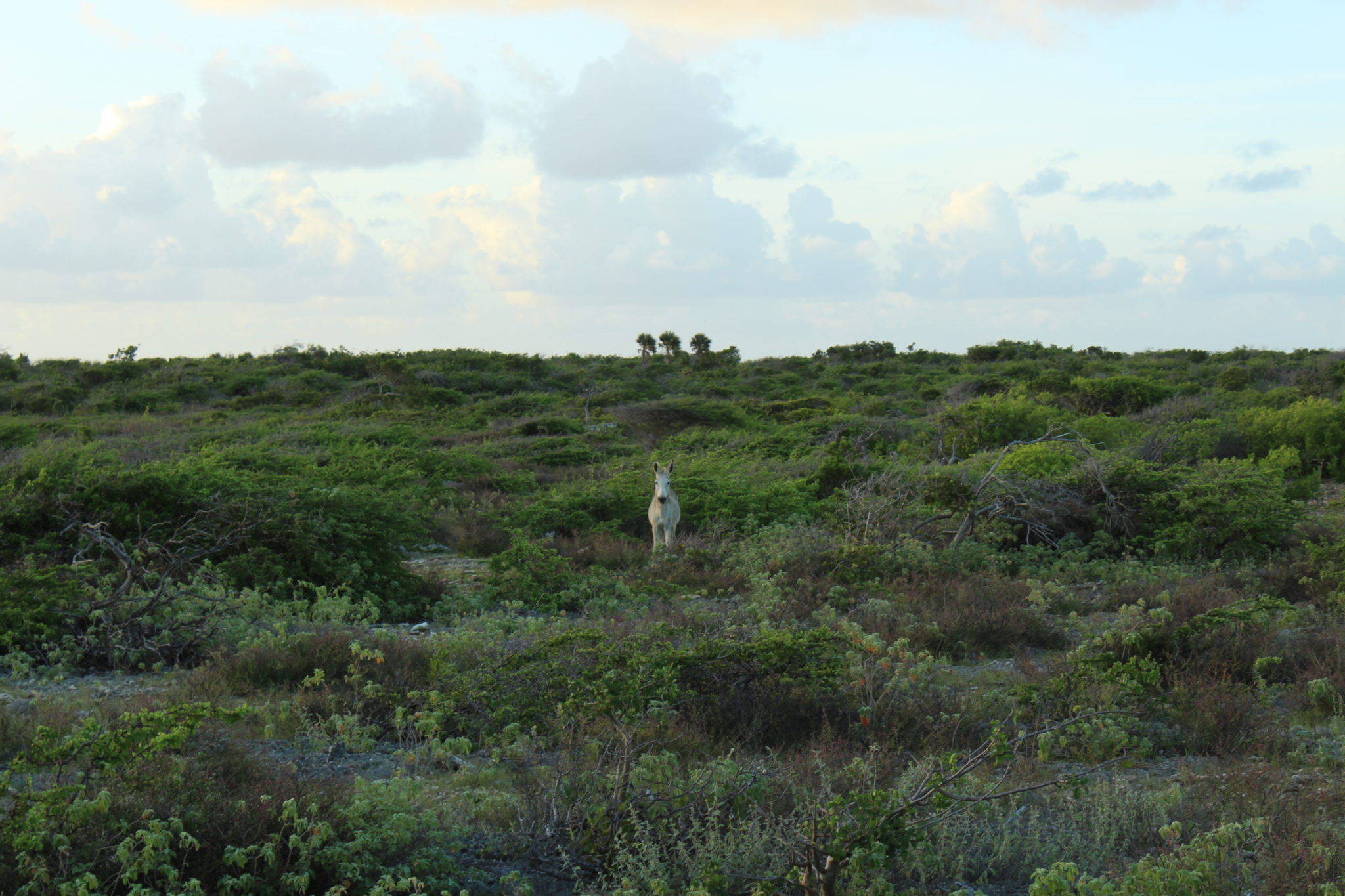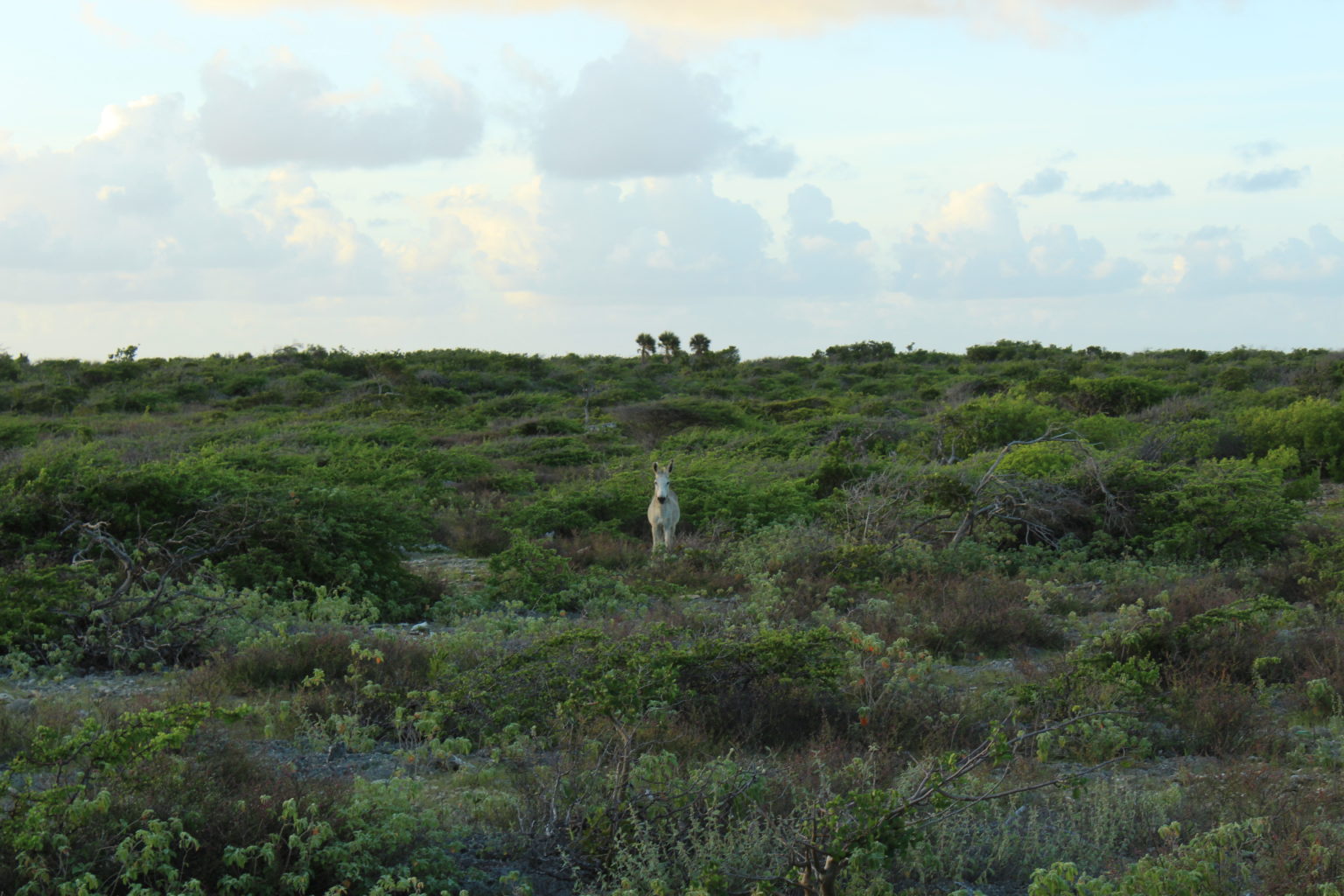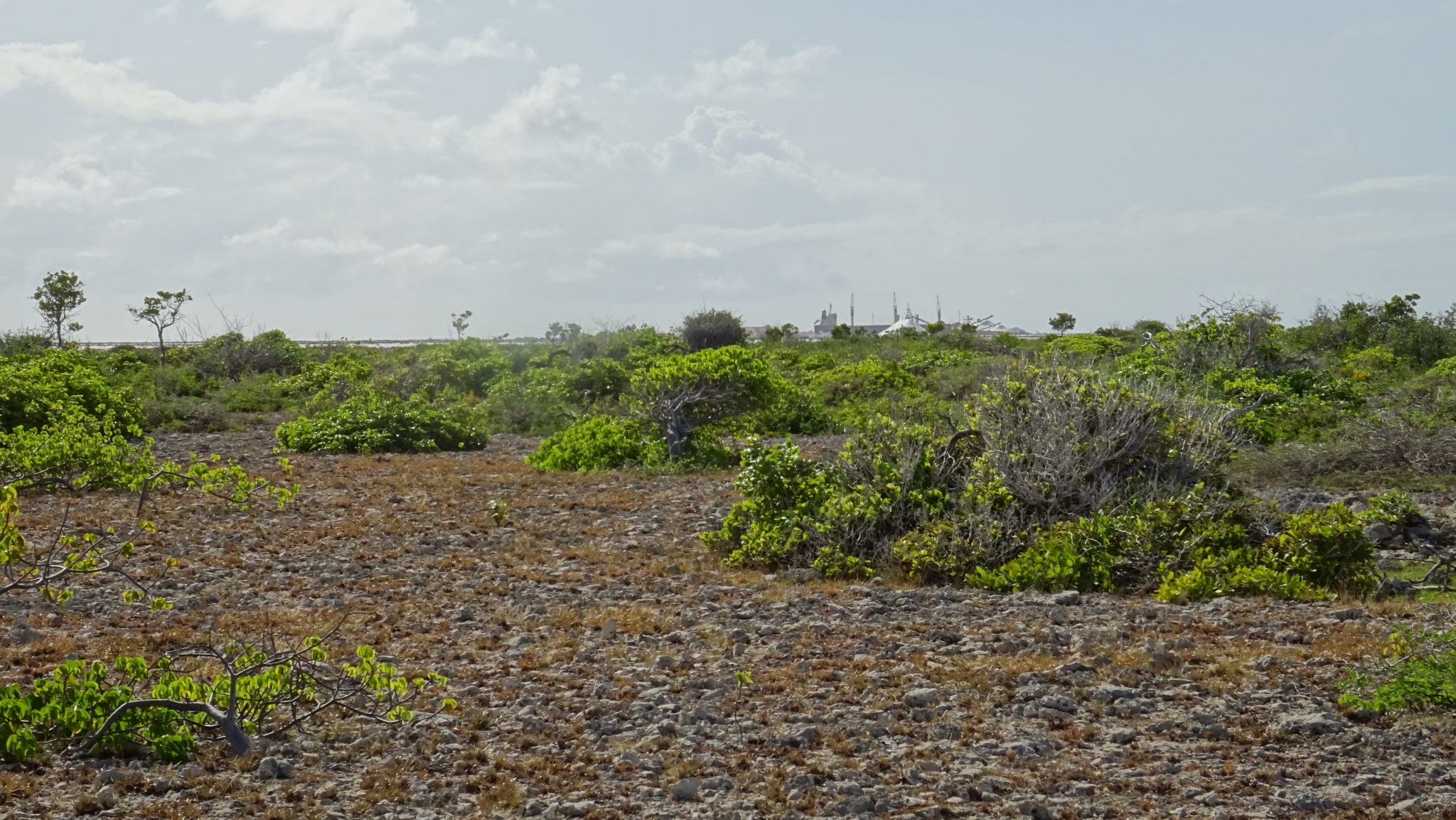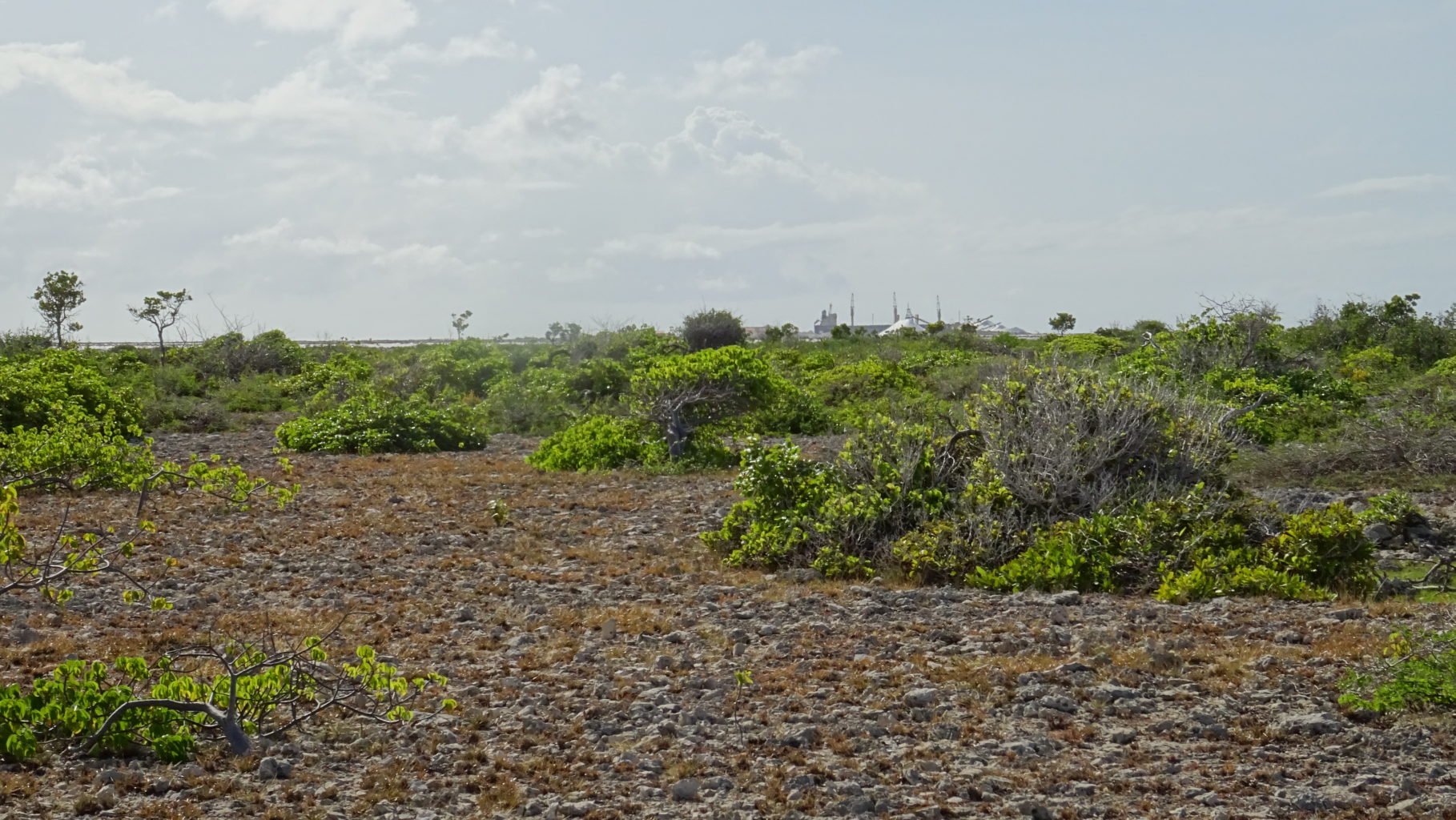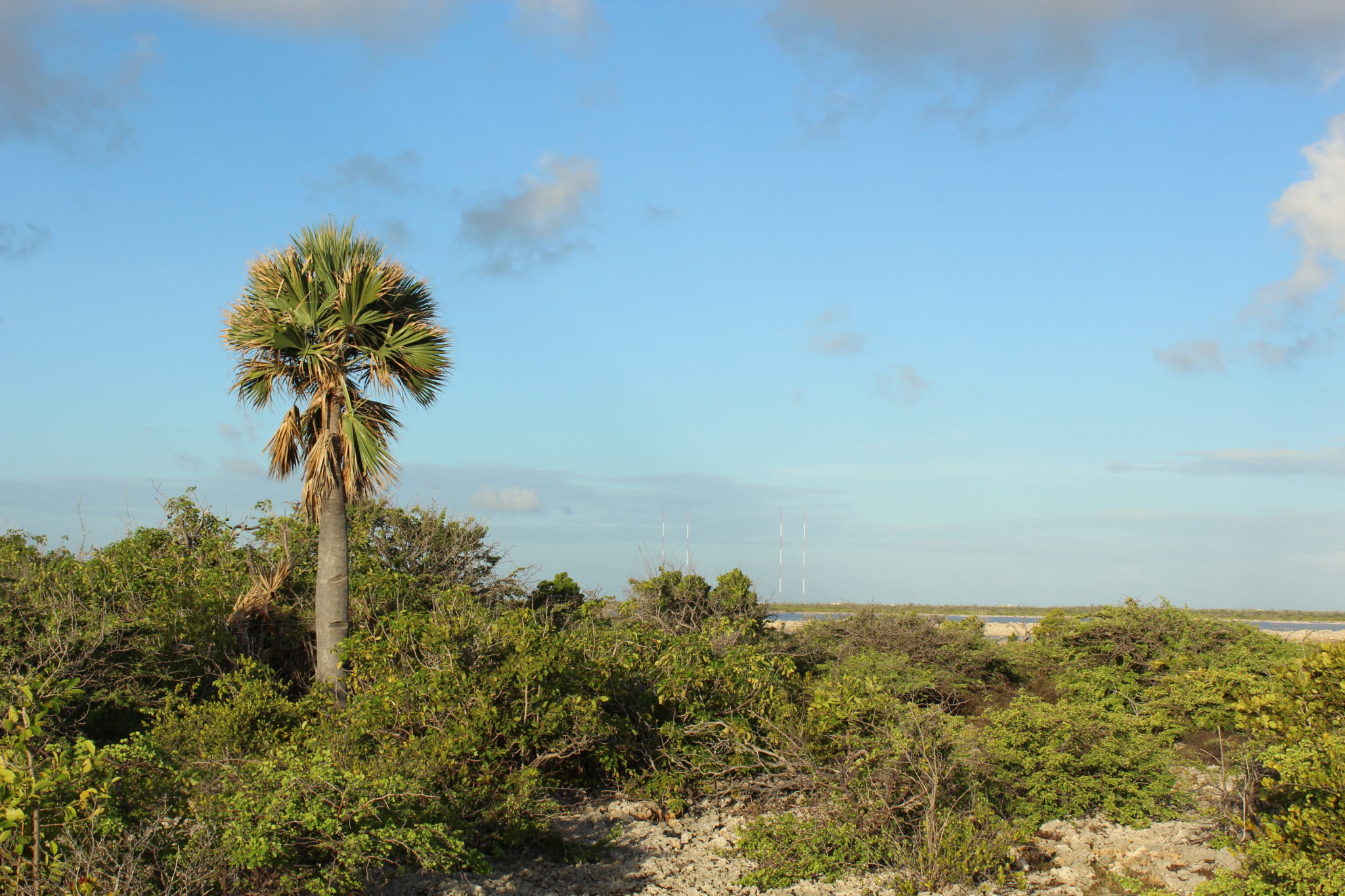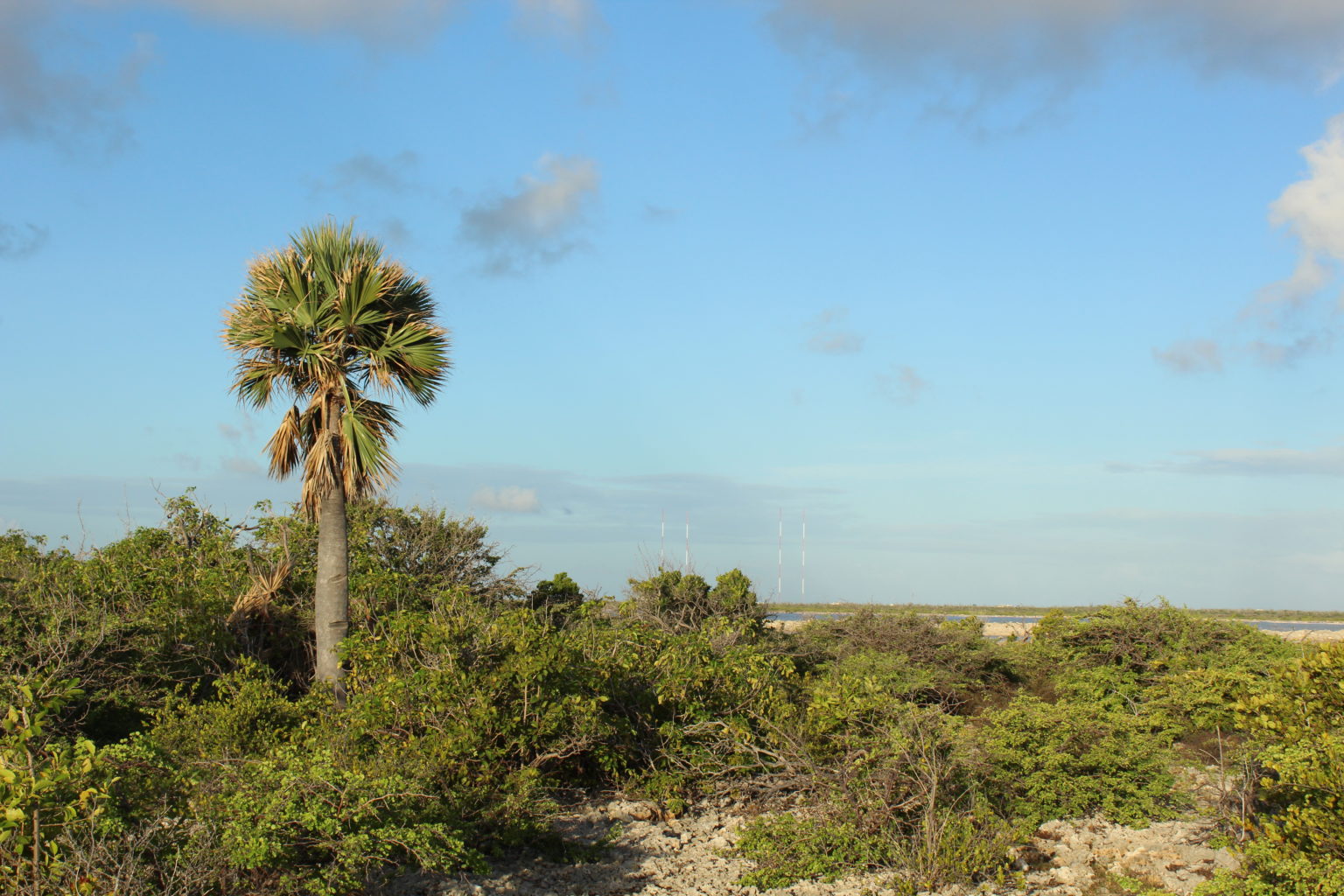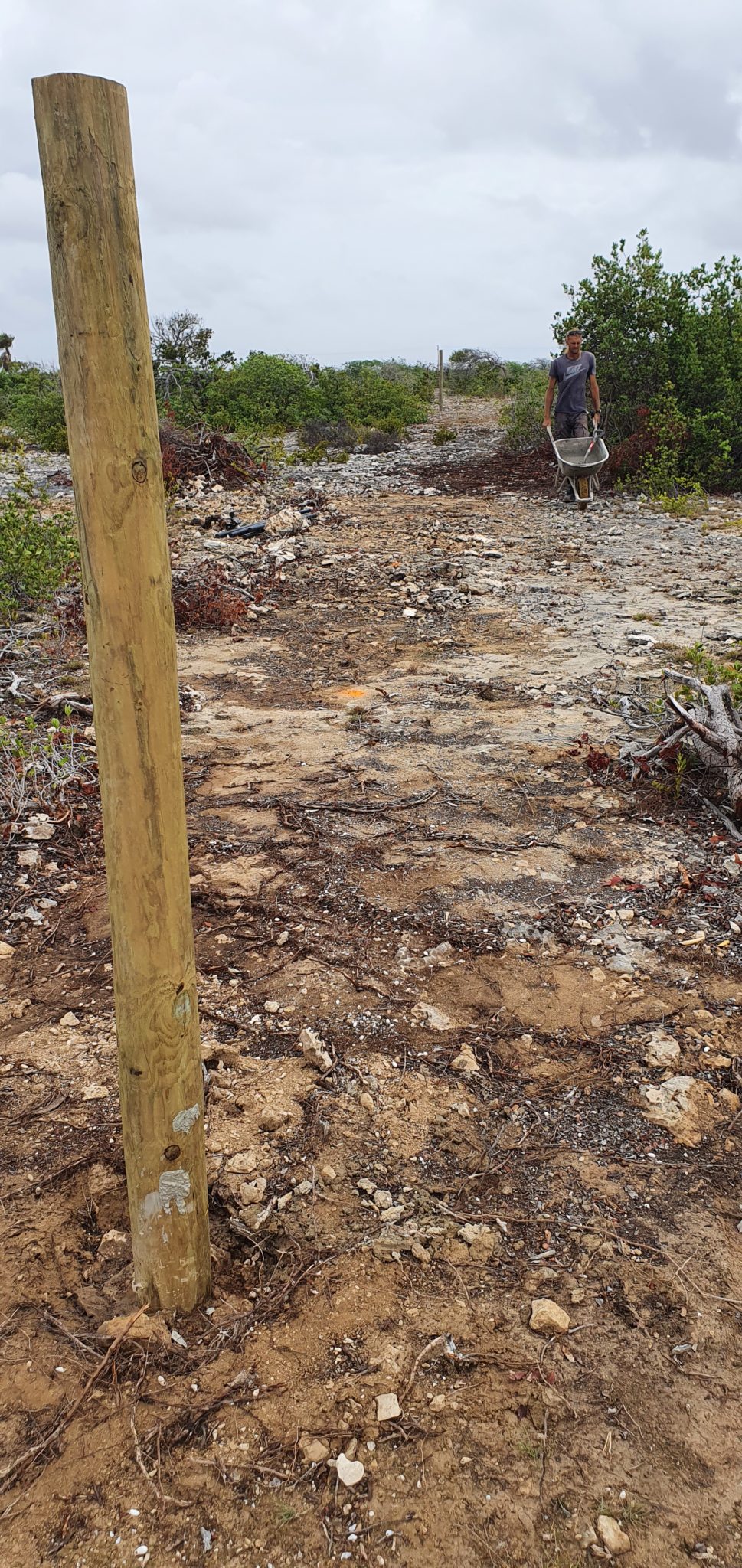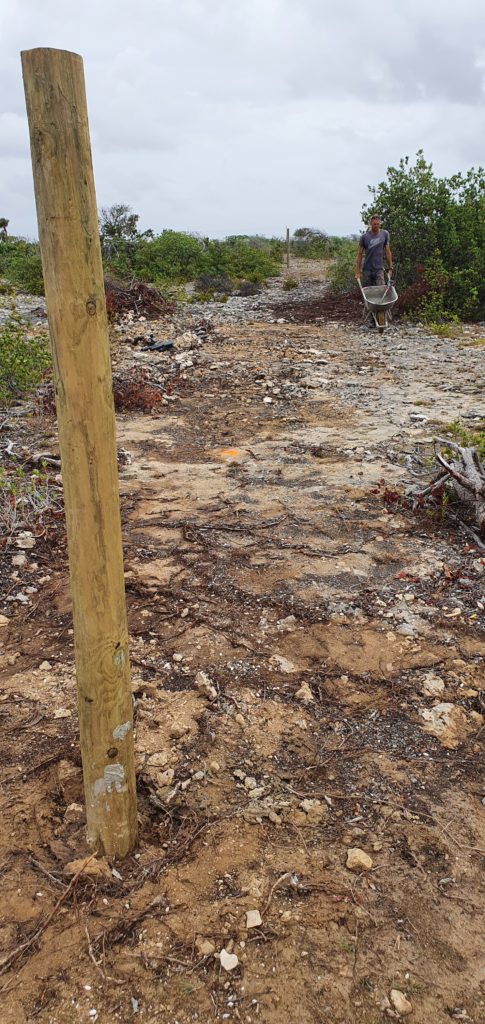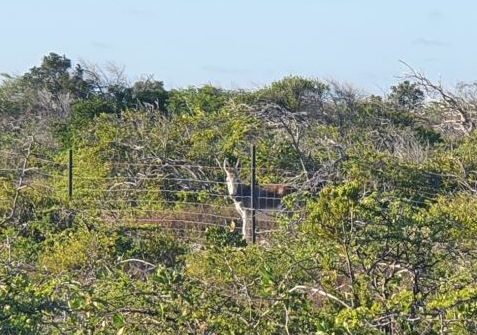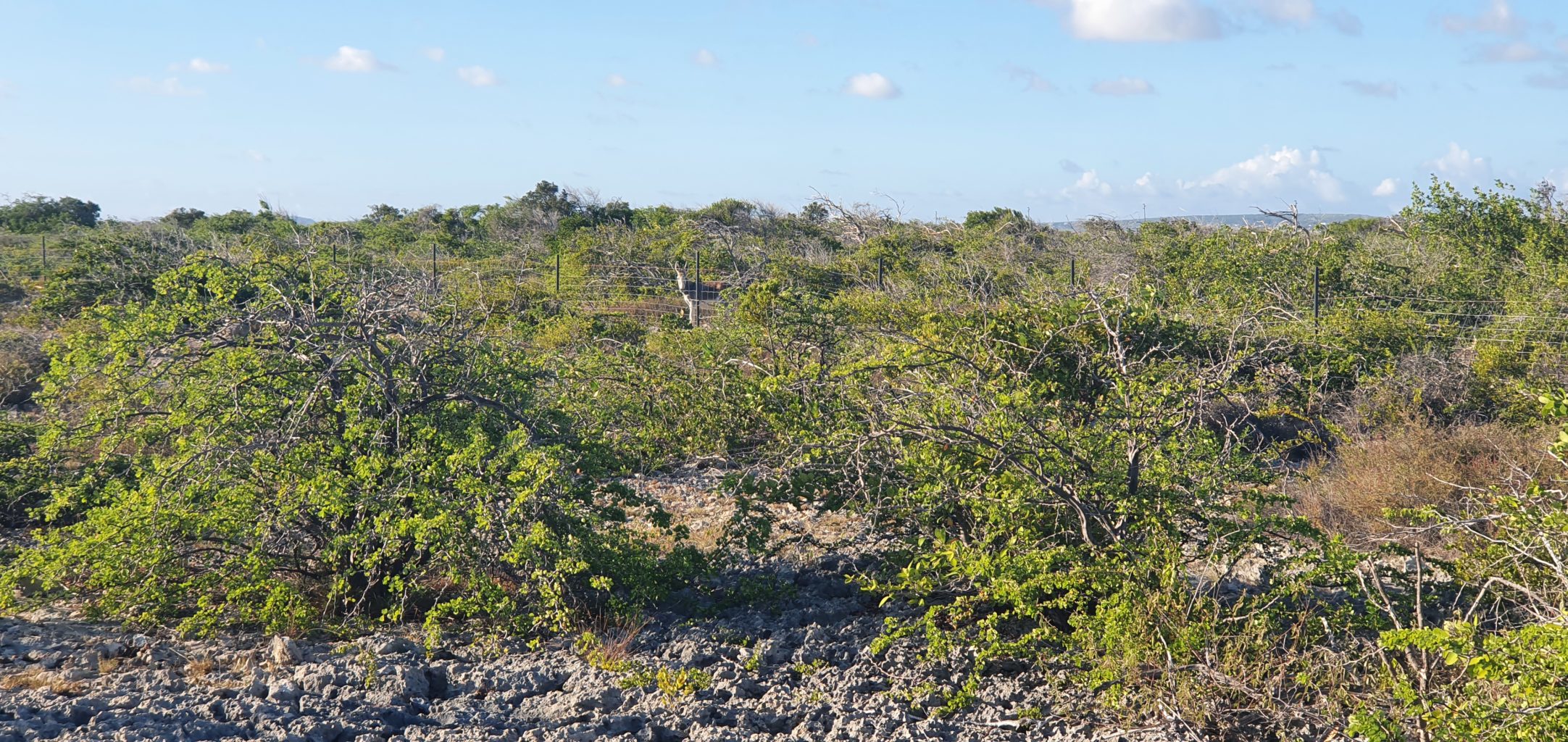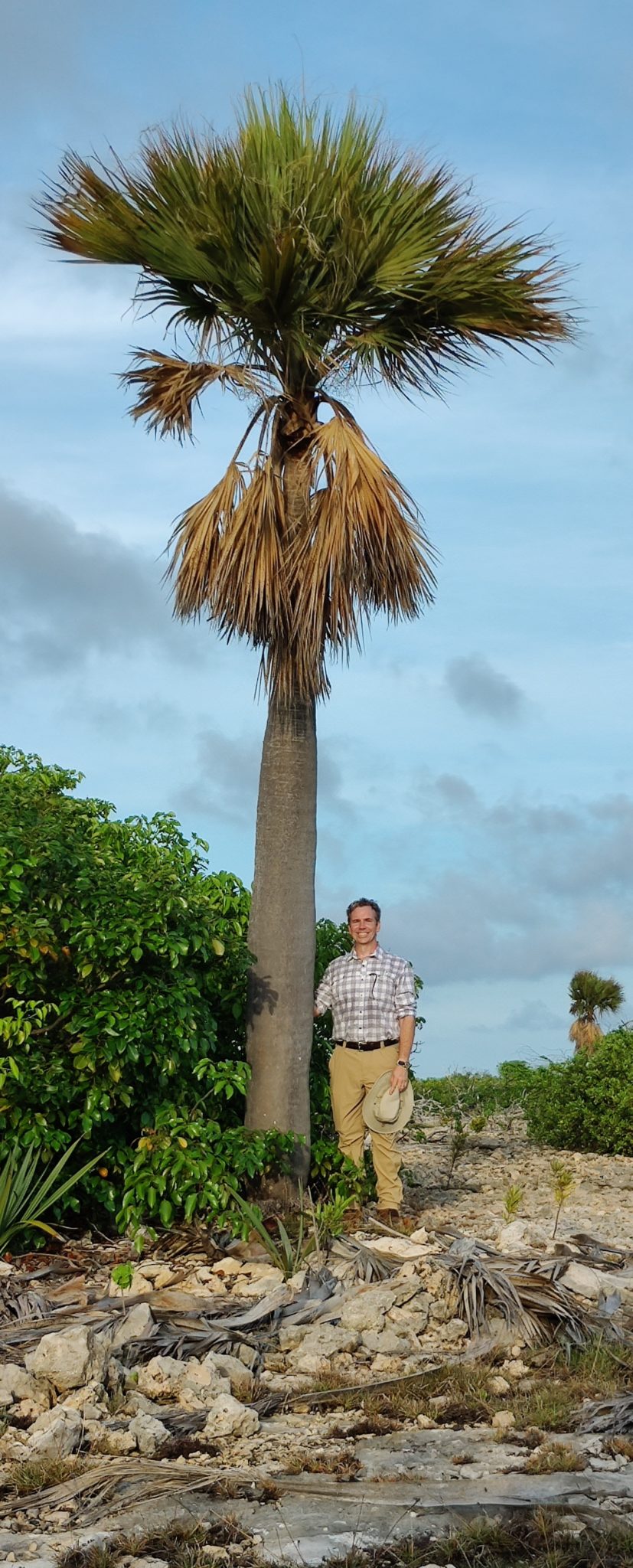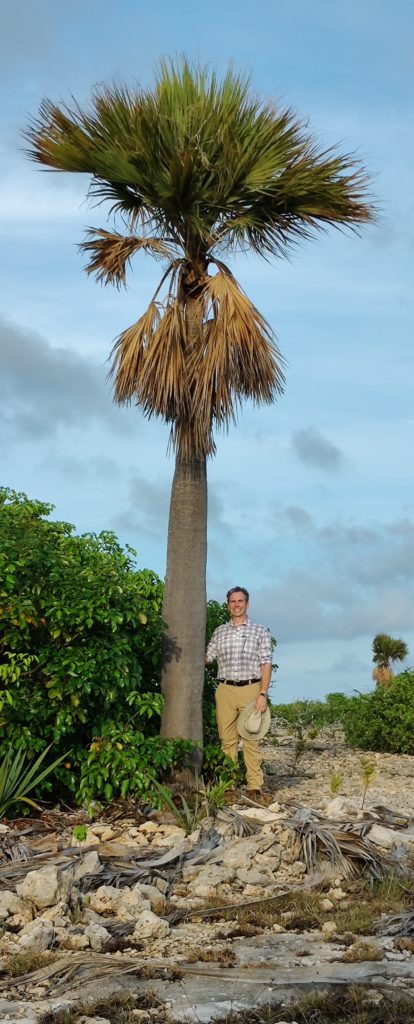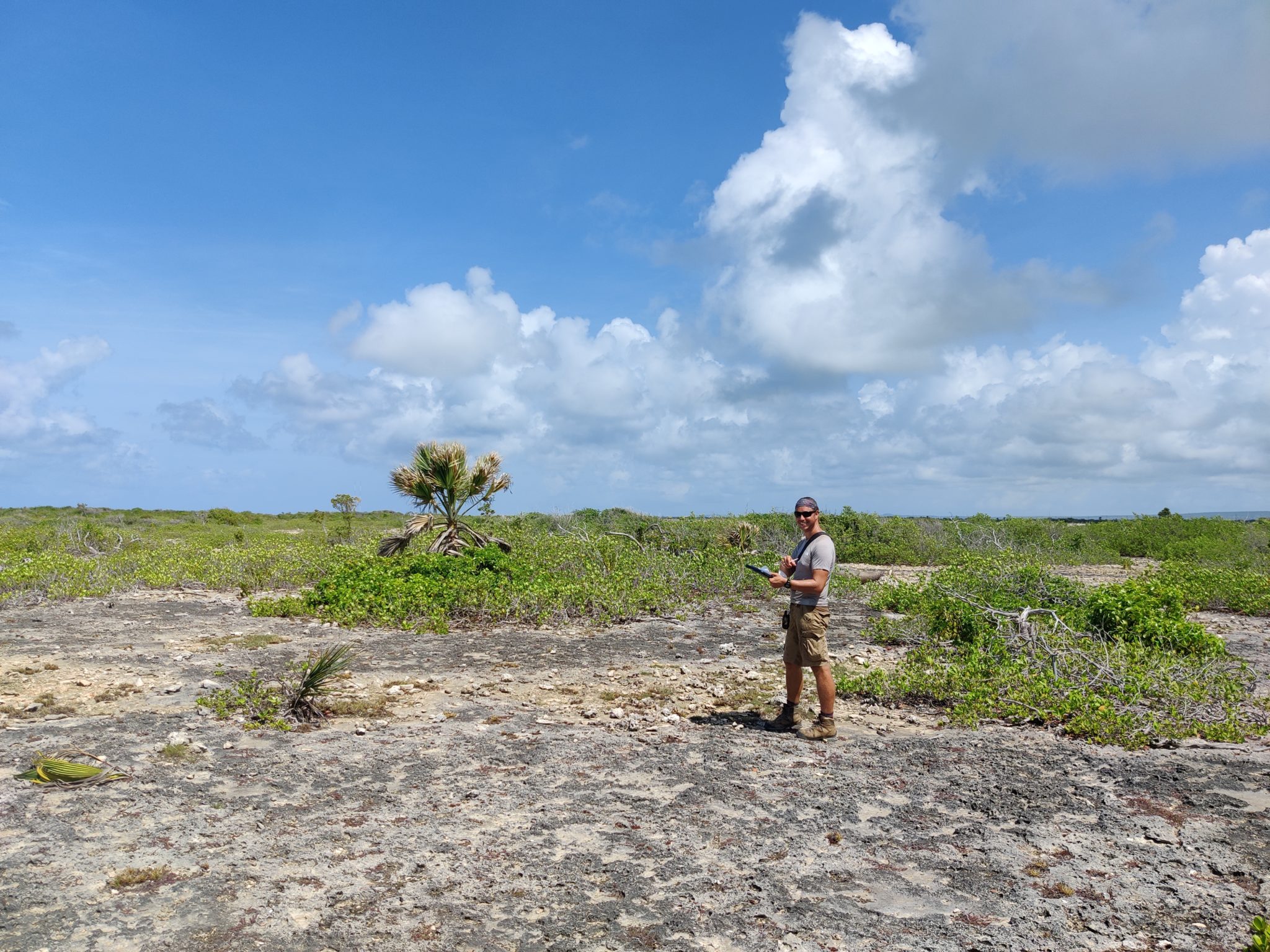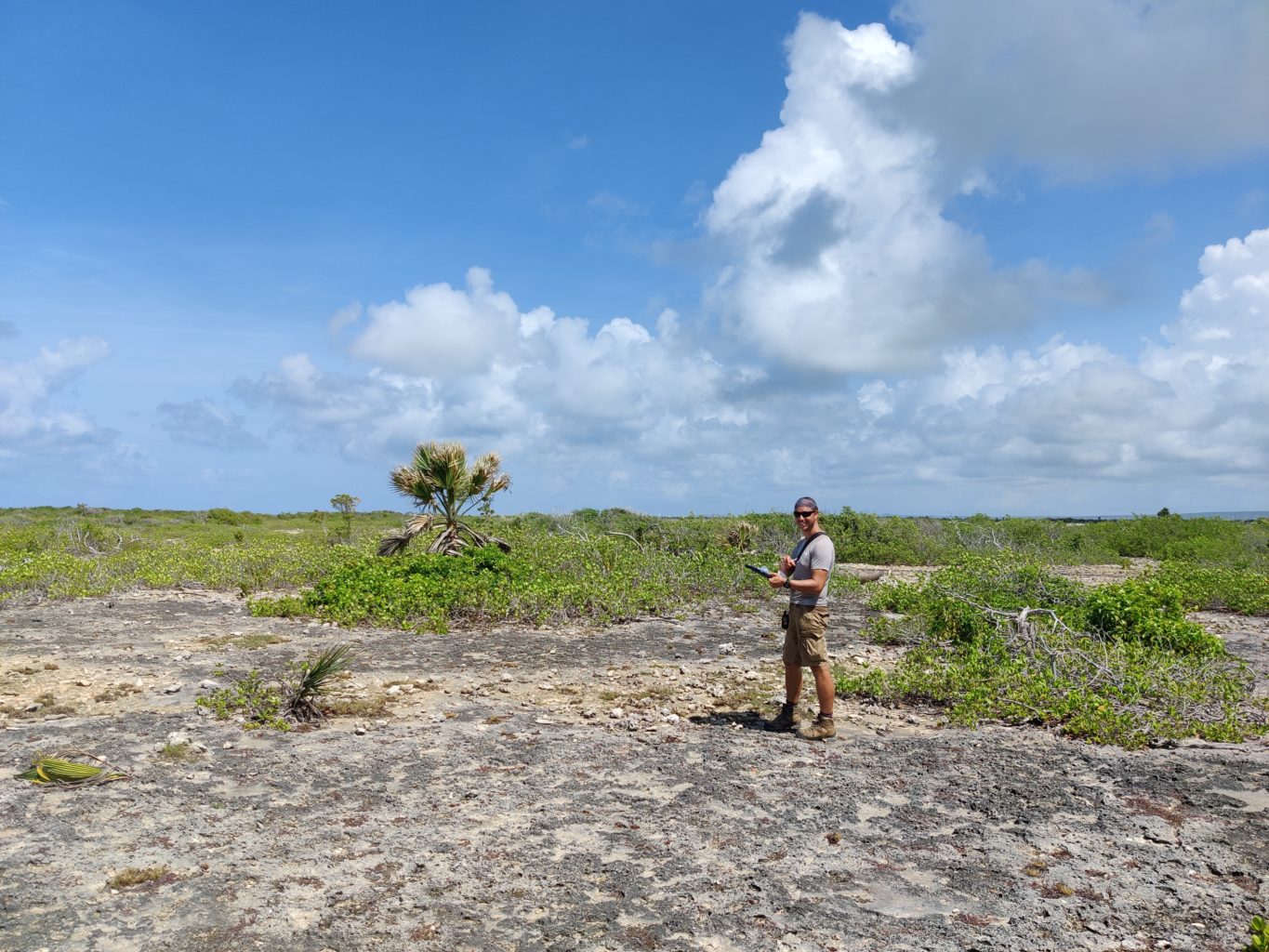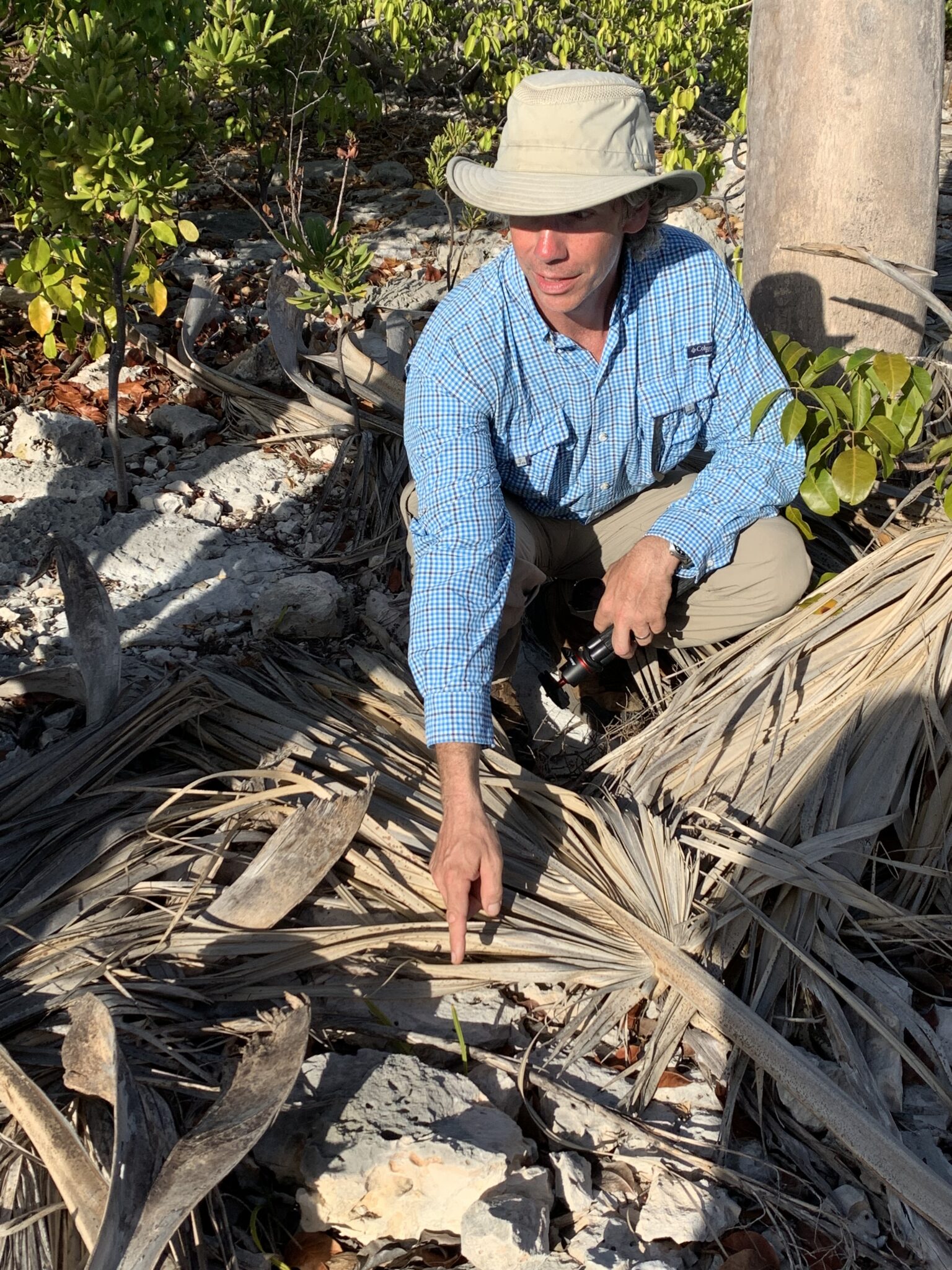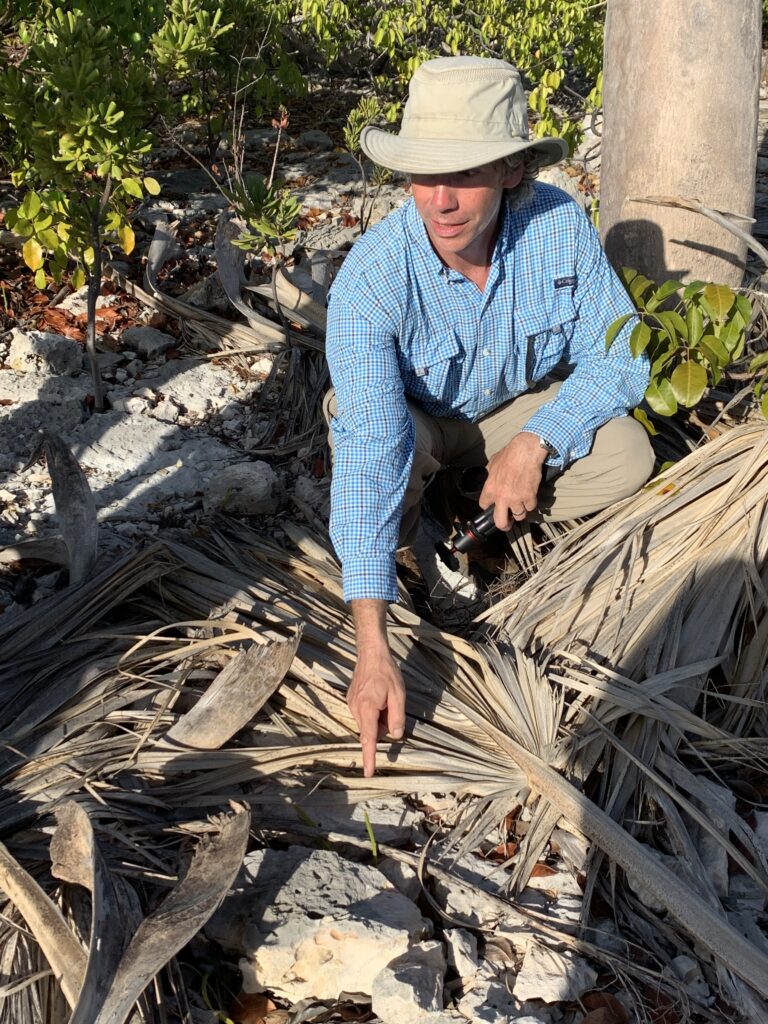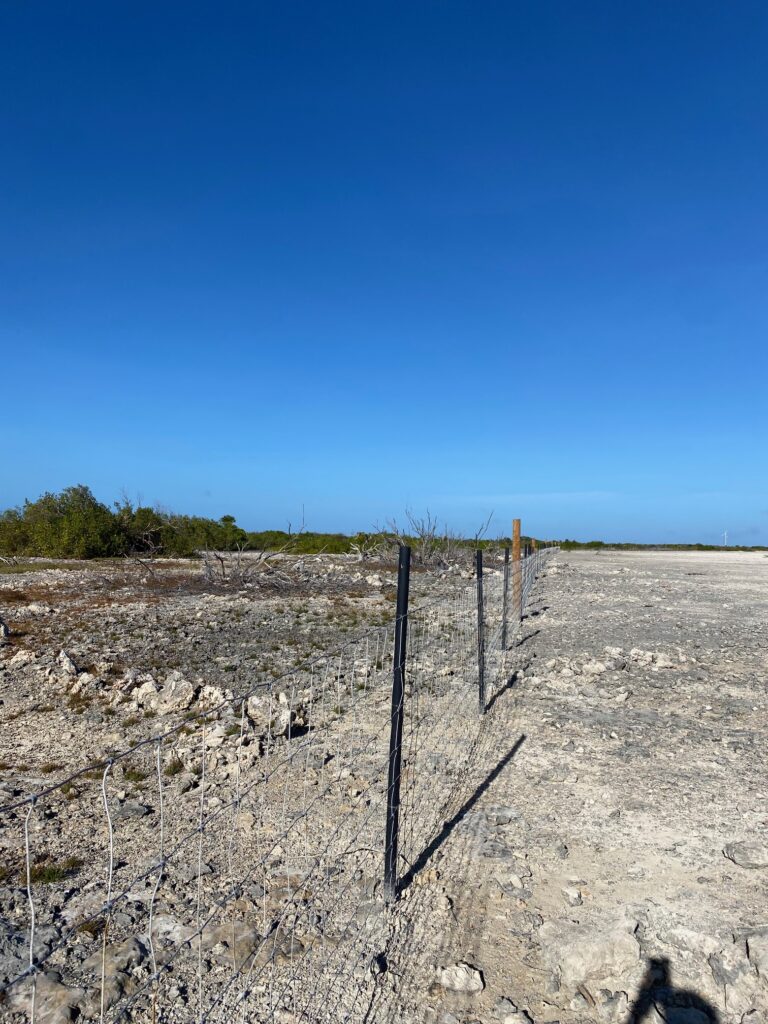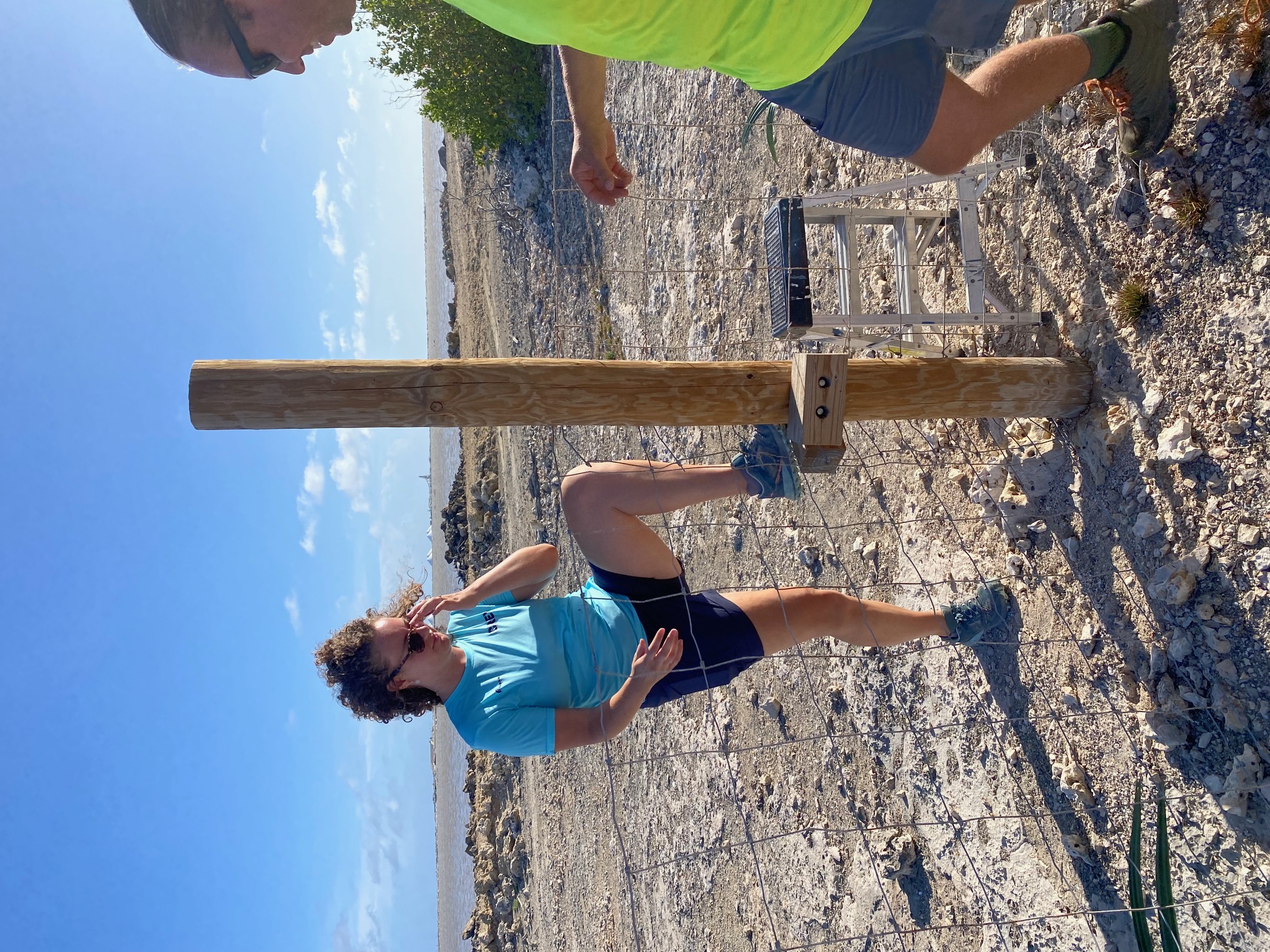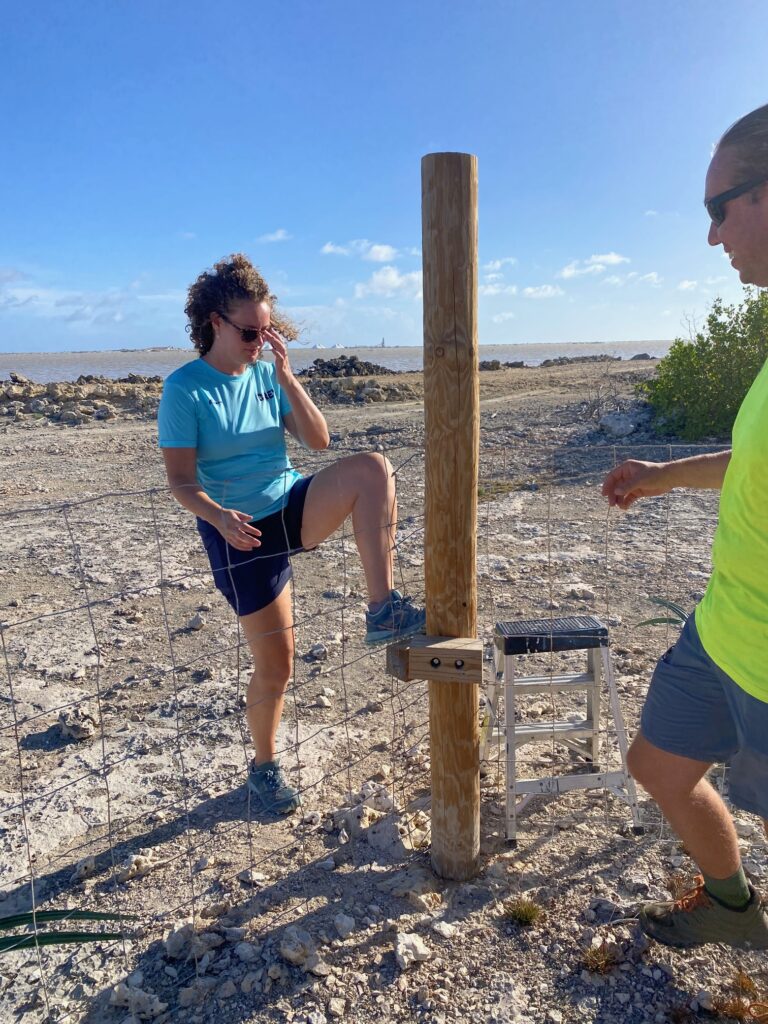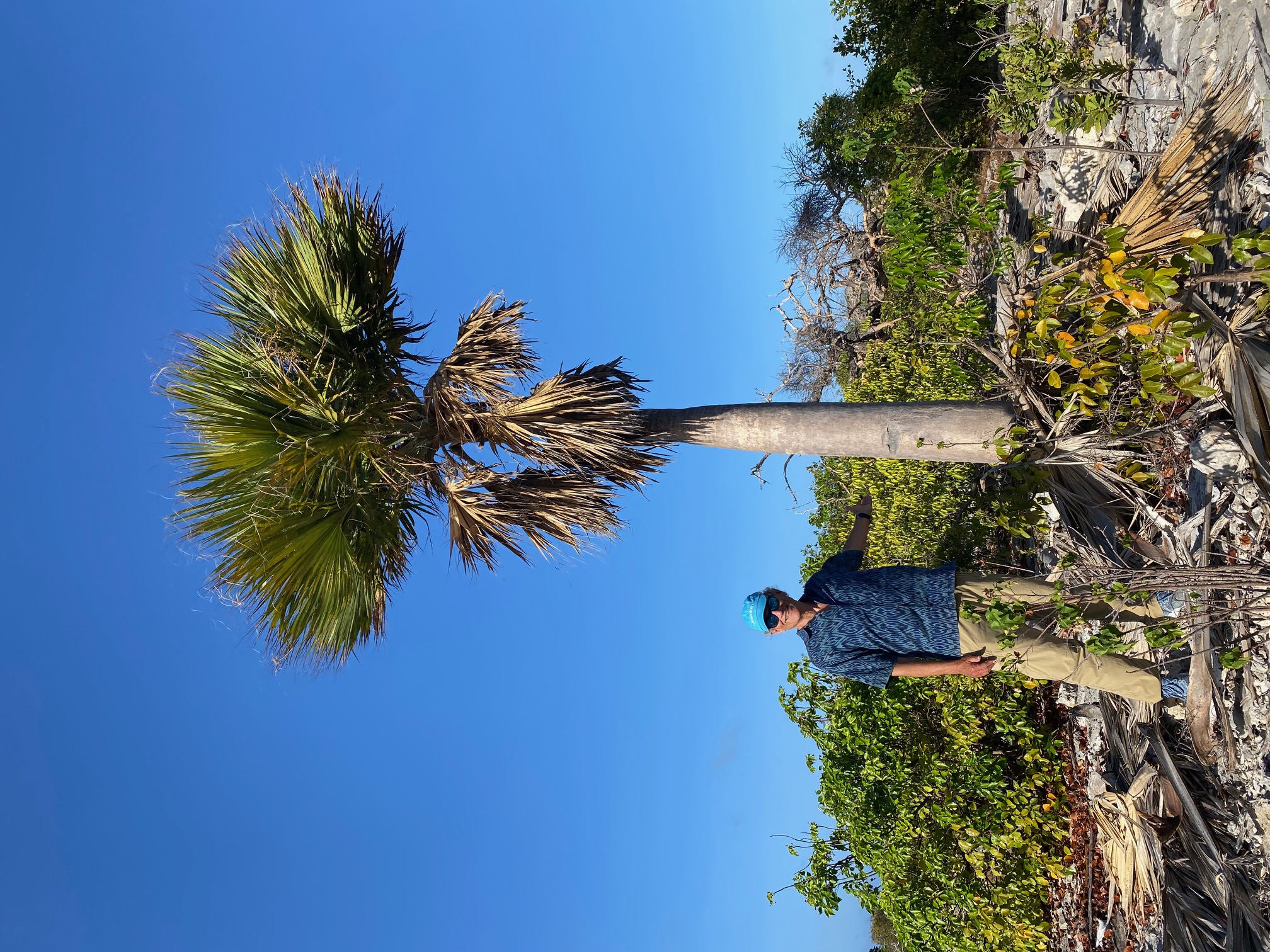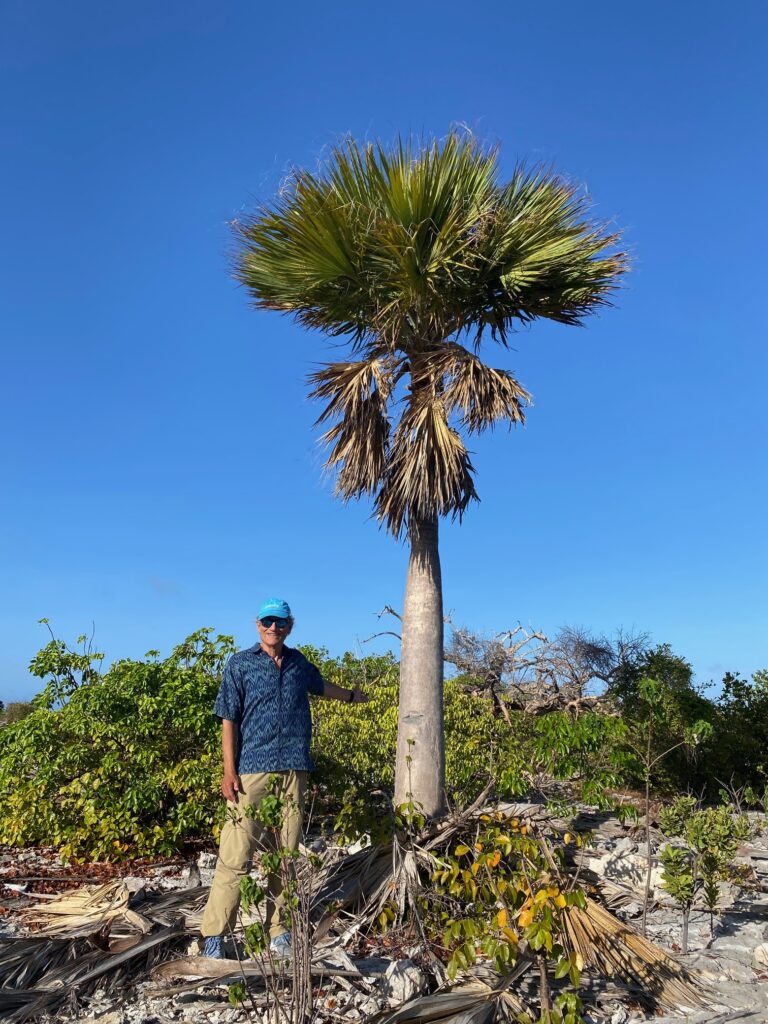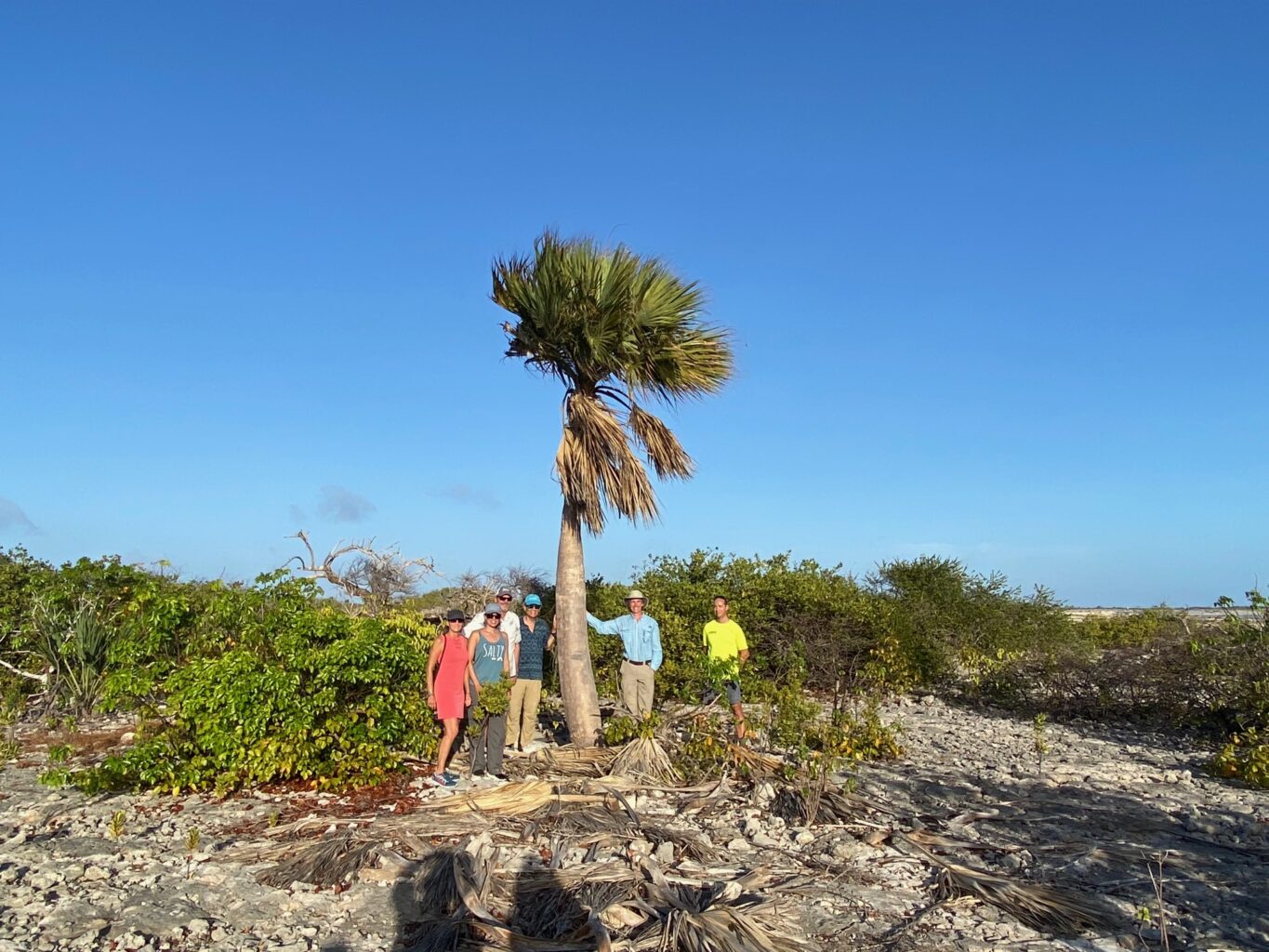The critically endangered Bonaire palm tree (Sabal lougheediana) exists only on the Caribbean island of Bonaire, just north of Venezuela—and its foothold there is precarious. Only about 25 mature trees are left, making it one of the world’s rarest plants. And as old trees die, there are no new ones to replace them. When new seedlings sprout, the feral donkeys and goats that roam the island quickly eat them.
Seacology is funding construction of a fence around most of the surviving Bonaire palms, to keep out grazing animals. The fence will encircle about 35 acres, including the densest stand of trees. Our local partner is a Bonaire conservation organization, BonBèrdè, which has built similar fences on other parts of the island.
The fence will improve conditions for all of the island’s native plants and animals. In the newly enclosed area, there will be a rapid increase in vegetation cover and diversity. The fence won’t affect the island’s only large native terrestrial animals, iguanas and lizards, which will have no trouble passing through it.
A Seacology grant will also fund a program to grow and plant palm seedlings. The Montgomery Botanical Center in Coral Gables, Florida will operate the propagation program.


